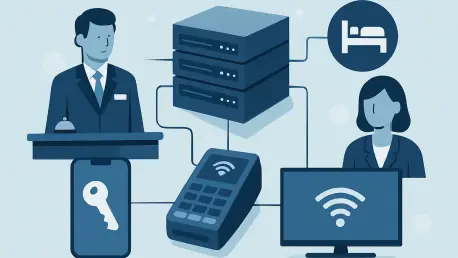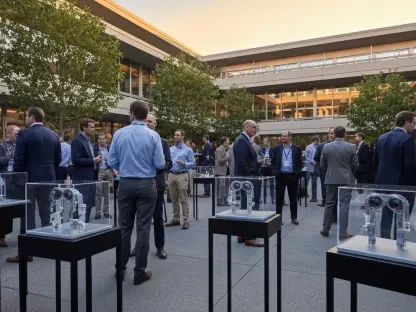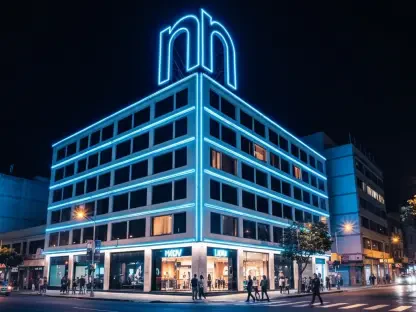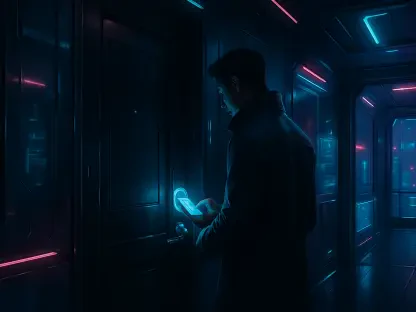In an era where guest expectations for personalized service have never been higher, the hotel industry faces a critical challenge: balancing individuality with operational reliability. Phil Brown, a consultant at Hospitality Technology Advisory, emphasizes that while hotels have historically prided themselves on unique identities, the time has come to adopt a more uniform approach to technology. For centuries, properties have celebrated their distinctiveness, each claiming to offer an unmatched experience. However, as guests now demand tailored interactions that reflect their personal preferences, the need for consistency in backend systems becomes undeniable. A standardized tech framework can support this personalization by ensuring seamless operations, allowing staff to focus on creating memorable moments rather than grappling with disjointed tools. This shift toward uniformity does not mean sacrificing character but rather building a foundation that empowers hotels to meet modern demands effectively. The following discussion explores why embracing consistent technology is essential for enhancing guest service.
1. Understanding the Value of Standardization in Hospitality
The hospitality sector often grapples with the tension between uniqueness and uniformity, particularly among large hotel chains that roll out multiple brands to cater to diverse guest needs. These operators face criticism for adopting a “cookie-cutter” model, where strict brand guidelines dictate everything from food presentation to staff attire. Such standards, often outlined in detailed brand manuals, ensure reliability and justify franchise fees by maintaining a predictable level of quality across properties. However, detractors argue that this rigidity can stifle authentic hospitality, making service feel mechanical and insincere to discerning guests. Despite the pushback, there is undeniable value in this approach. Consistency provides a dependable experience that guests can trust, whether they are staying in a bustling city or a remote destination. This reliability serves as a critical lesson for technology adoption, where a unified system can similarly guarantee smooth operations and set the stage for exceptional service delivery.
Moreover, guests themselves often prioritize shareable, unique experiences over standardized offerings, prompting branded hotels to incorporate creative elements like eye-catching decor for social media appeal. This trend highlights a paradox: while guests crave individuality, they also rely on the predictability that standardized systems provide. In terms of technology, this means hotels must establish a consistent digital infrastructure to handle core functions like bookings and guest data management. Such a foundation not only supports operational efficiency but also frees up resources to craft those personalized touches that guests value. Critics may view uniformity as a loss of identity, yet it offers a framework within which properties can still express distinctiveness. By learning from the branded model, hotels can apply similar principles to their tech stacks, ensuring that essential systems work cohesively while still allowing room for innovation and bespoke service that delights guests in unexpected ways.
2. Identifying Challenges in Hotel Technology Integration
The journey of technology in the hotel industry mirrors the sector’s long and varied history, marked by a lack of a universal solution or a comprehensive “Hotel in a Box” package. Over the years, properties have pieced together their tech stacks incrementally, often resulting in unstable, patchwork systems that resemble a precarious Jenga tower. Many of these tools are not utilized as originally designed, with staff resorting to workarounds due to insufficient training or misalignment with actual needs. This fragmented approach has fostered deep-seated skepticism within the industry about the potential of technology to truly transform operations. The fear of disrupting an already fragile setup often prevents hotels from making necessary updates, leaving them stuck with outdated or inefficient systems that hinder guest service rather than enhance it. Addressing this challenge requires a fundamental shift in how technology is perceived and implemented across the sector.
Additionally, the gradual adoption of disparate systems has created a landscape where compatibility issues and inefficiencies are commonplace. Hotels often hesitate to replace or integrate new solutions, worried that any change might collapse the entire operational structure. This reluctance is compounded by a lack of trust in technology providers, many of whom fail to grasp the unique demands of hospitality. As a result, staff may bypass intended functionalities, further complicating workflows and reducing the effectiveness of investments. The impact on guest service is significant—delays in check-ins, inaccurate billing, or inconsistent communication can frustrate travelers and tarnish a property’s reputation. Overcoming these hurdles demands a clear-eyed assessment of current systems and a commitment to building a more cohesive tech environment. Only by confronting these integration challenges can hotels ensure that technology becomes a reliable ally in delivering superior guest experiences.
3. Steps to Establish a Robust Technology Framework
Creating a dependable technology foundation for hotels involves a structured approach that prioritizes clarity and alignment with business goals. The first step is to evaluate true needs by stepping back and assessing what the operation genuinely requires, rather than chasing fleeting trends or perceived wants. Next, hotels must challenge and verify solutions by engaging critically with providers, questioning their offerings with the same rigor applied to any supplier to confirm alignment with expectations. Acknowledging current flaws is also essential—identifying and agreeing on the weaknesses of existing systems establishes a baseline for improvement. Furthermore, demonstrating improvement value requires outlining why a new solution is superior and defining how its benefits will be measured and recognized by stakeholders. Planning the switch-over with a detailed transition strategy ensures minimal disruption, while standardizing across operations by updating guidelines unites all properties under a cohesive system for streamlined management and comparison.
Implementing these steps transforms the way hotels interact with technology, turning it from a source of frustration into a tool for empowerment. A thorough evaluation of needs prevents costly missteps, ensuring investments address real pain points like slow guest check-ins or disjointed data systems. Engaging with providers fosters transparency, reducing the risk of adopting tools that fail to deliver promised results. By recognizing current shortcomings, hotels can set realistic goals for improvement, while clearly defined metrics for success keep everyone accountable. A well-planned transition mitigates risks, maintaining service quality during changeovers, and standardization across properties simplifies troubleshooting and performance tracking. This systematic approach not only stabilizes operations but also lays the groundwork for scalability, allowing hotels to adapt to future demands without starting from scratch. Ultimately, these steps ensure technology supports the mission of delivering seamless, high-quality guest service with consistency and precision.
4. Unlocking Benefits of a Unified Tech Platform
A standardized technology platform offers significant advantages for hotel groups, starting with the simplification of operations across multiple properties. When all locations operate on the same system, it becomes easier to compare performance metrics, share best practices, and identify areas for improvement. This uniformity reduces the complexity of managing diverse tech setups, saving time and resources that can be redirected toward enhancing guest interactions. Additionally, a unified platform minimizes training demands, as staff can transfer skills between properties without needing to learn entirely new systems. The result is a more agile operation capable of responding to guest needs with speed and accuracy. Beyond efficiency, this consistency fosters a sense of reliability that guests appreciate, knowing they can expect the same level of service regardless of location. Such dependability builds trust and strengthens brand loyalty in a competitive market.
Another critical benefit lies in addressing the gap between technology providers and the hospitality sector’s unique requirements. Many providers lack deep industry knowledge, leading to solutions that are misused or underutilized due to poor fit. A standardized tech base, developed through upfront collaboration with providers, helps prevent these issues by ensuring systems are tailored to actual needs. Once this solid foundation is in place, hotels gain the freedom to layer on personalized, standout experiences that elevate guest satisfaction. Whether it’s customizing room settings via a mobile app or offering unique local recommendations, this flexibility allows properties to differentiate themselves while maintaining operational stability. The balance between uniformity and creativity becomes a powerful tool, enabling hotels to meet modern expectations without sacrificing efficiency. A unified tech platform thus serves as both a backbone for reliability and a springboard for innovation.
5. Paving the Way for Future Innovation
Reflecting on the strides made, hotels that adopted a standardized approach to technology found themselves better equipped to handle the evolving demands of guests. This shift allowed properties to maintain operational consistency while still delivering unique, memorable experiences that stood out in a crowded market. By establishing a reliable tech foundation, many overcame past struggles with fragmented systems, ensuring smoother workflows and happier travelers. Collaboration with providers proved instrumental, as it addressed misunderstandings and aligned solutions with real hospitality challenges. The focus on clear evaluation, strategic transitions, and uniform standards across properties paid dividends in enhanced efficiency and guest trust. Looking ahead, the industry must continue to balance standardization with creativity, using consistent tech as a launchpad for innovative service offerings. Hotels should prioritize ongoing partnerships with tech experts and invest in staff training to sustain this momentum, ensuring they remain agile and guest-focused in an ever-changing landscape.









